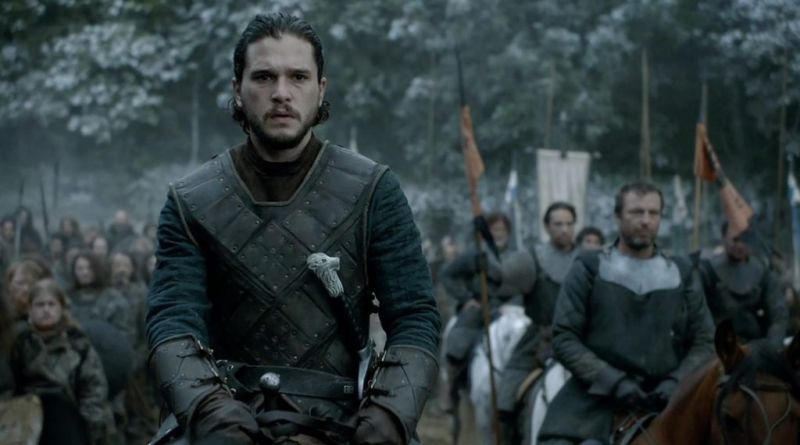The hero’s true journey
By Hermes Leal
When the characters Arya Stark and Jon Snow start their journey, in “Game of Thrones”, their destinies are already outlined, due to an implicit contract that they will make with other characters to fulfill their journeys. His adventures will be embedded within a narrative scheme of the hero’s journey, organized by linguist AJ Greimas, based on the studies of V. Propp, which establishes this hero’s journey around a contract that will unfold in a long phase of manipulation and sanction. of the characters.
Unlike the symbolic journey of the hero of J. Campbell, which takes into account an external analysis of the structure of the action, Greimas journey has its action structure organized and managed based on the passions of the characters, the internal journey of the character, a journey which takes into account the changes and transformations of the characters within the logic of the narrative itself.
The hero’s journey takes place within the recent three-act narrative theory, in which the hero sets out on an adventure to settle a damage, not in his own name, but in the name of a contract that forces him to act.
Jon Snow’s heroic journey takes place with a contract with the Night’s Watch, to fight the White Walkers, where he will fight to save the humanity that destines him, while all this action is supported by an internal journey by Jon, which is to liquidate your status as a “bastard”, a person without a family and without honor.
Little teen Arya Stark’s great journey is to acquire power to kill several people on her list, ranging from kings to giants. A lost journey. But Arya Stark makes a contract with Jaqen, a “sender” who teaches him how to kill, who will give him the power to destroy all his enemies. At the same time, when Arya’s journey of action is to kill her enemies, her inner journey is to settle the hatred she feels and that has thrown her into the revenge narrative.
What exists in common with these external journeys of the characters is the existence of a “sender”. This strategic character will destine the heroes and the other characters.
There is a logical theory to organize the hero’s new journey, following the Aristotelian line of transformation of the character in three acts, in a scheme that basically works with three functions of characters: “subject”, “object” and “sender”, being that the helper, opponent and receiver functions can be occupied by the subject, object or sender. Therefore, our hero’s journey is marked by a conflict between these three functions.
Sender → Object → Receiver
↑
Helper → Subject ← Opponent
On this journey, for example, with Jon Snow as his subject, his contractual object is the Night’s Watch, and your sender is the humanity that elects him as protector. Jon Snow’s hero journey is commanded by an order from the recipient, which will conflict with his internal journey. What is at stake in this nucleus is a “junction” relationship between the subject and the object, and a sender.
First Act Second Act Third Act
CONTRACT MANIPULATION SANCTION
This junction between the plane of action and the plane of feeling, between subjects, objects and sender, will shape the journey of transforming history and characters in three acts and begins with a “contract” between characters, a contract of trust that will start the journey in search of fulfilling this contract.
Following the contract, the hero follows his journey in a second stage, the “manipulation”, where the character will have to make arrangements to obtain “knowledge” and “power”, and then, in the sanction, in the third act, finally to be realized from the point of view of feeling and acting, from the revelation of the truth hidden in the contract.
It will be the sender of Jon Snow, on his journey to save humanity, that justifies the death of Daenerys. The dragon queen’s betrayal was not with Jon, but with its sender, the humanity that elected him as protector in the contractual phase. In the moment of truth, of sanction, Jon Snow’s sender speaks louder, has more strength, and he kills Daenerys.
This journey in Jon Snow’s action plan, under the force of a sender, conflicted with his internal journey, which was to liquidate his bitterness and rebellion by being excluded from his society and family by being a “bastard”, marrying him and reigning alongside the dragon queen. However, the strength of the sender spoke louder. So he is a hero. He chose the greater cause and not his particular cause.
The hero journey of “Joker”, as written in another article, goes through this internal journey of transformation, in which the power of the sender is always at stake, interfering in the feeling and the action of Arthur, whether his mother or the presenter of TV that can give him the fame he so desires.
What differentiates a hero from another character is in his condition of liquidating a damage that makes him suffer, but that this liquidation will occur due to a greater sender, such as saving humanity, instead of liquidating his individual suffering. This is the scheme of superheroes like Batman, Superman and Spider-Man, for example. In the conflict between the internal and the external journey, the strength of the sender always wins.
But there are heroic journeys, with simple characters, losers, who also go through internal dilemmas, the journeys are more sensitive, and do not occur at the action level, as Justine’s journey, in “Melancholia”, by Lars Von Trier, in which the character is totally dominated by the “death” sender, the planet Melancholia, manipulating her action journey, which was to get married.
This same journey is in the scheme of each character in “Parasite”, as I already wrote in another article, and in the characters Cleo and Sofia, in “Rome”, with a script by Alfonso Cuáron, in which semiotics allows us to see the invisible journey of the character Cleo, occurring only at the level of sensation and not of your actions.
Cleo’s internal journey takes place in the form of feelings: of admiration, when she was making the contract with her boyfriend Fermín, or in the form of perception, when it was being judged, in the “sanction”, the truth about her feeling in previous acts, when he suffers from the passion of regret and remorse for having wished for the death of his own son still in his womb.
The hero’s journey is also a search for the potentialization of the soul, not suffering. This “contractual scheme” is just a skeleton so that we can put, in this internal journey of the characters, also the journey of the soul, exploring the “existential simulacrum” of the characters.
Arya’s journey began to be virtualized, with her wanting to be a murderer to avenge herself, and she “updated” by learning to kill, acquired a “knowledge” and only became realized, when his wanting was transformed into “power”, to potentialize your soul by killing your enemies and liquidating your pain, your hatred.
First Act Second Act Third Act
Contract Manipulation Sanction
Virtualized Updated Realized
(Wanting) (konwledge) (Power)
In Cleo’s internal journey, in “Rome”, there was a lack of competence, in the manipulation phase of her journey, not to feel the existence of a child who had not yet been born, and also competence not to “feel” remorse in her sanction, since that his journey was formed by “sensations”. Ultimately, in the hero’s true journey, actions are inseparable from his passions.
The concepts and theory discussed here are well detailed and applied in series such as “Game of Thrones” and in the films “Rome”, “Parasite” and “Joker”, on the website screewriteronline.com and in the book “The Passions in the Characters”.
Hermes Leal is a writer, journalist and filmmaker, Master in Filmmaking and PhD in Letters and Linguistics, in the field of French Semiotics, and author of the screenwriteronline.com method for writing screenplays.


